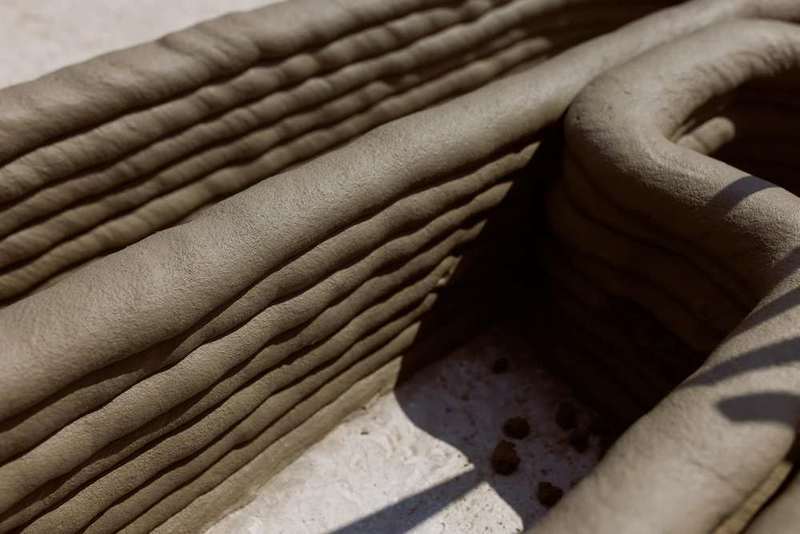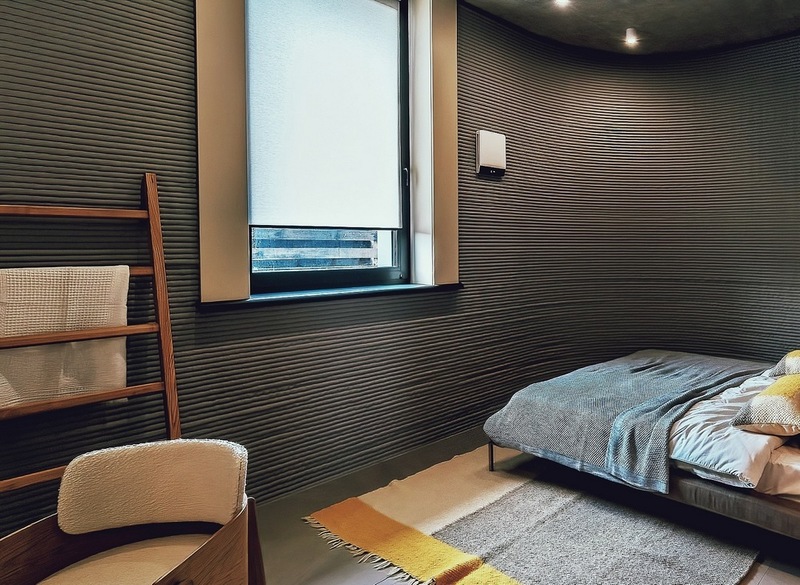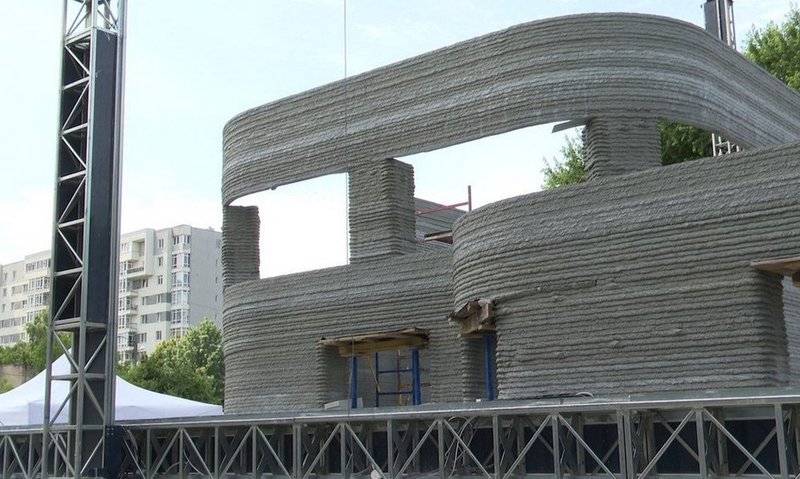The family of a fallen soldier moved into a house printed by a 3D printer
The Berezov family from Irpen, whose house was bombed by the Russians in 2022, moved into a house printed by a Ukrainian printer in two days. 105 partner companies made sure that the house was warm an

As a result of Russian aggression, more than 4 million citizens of Ukraine lost their homes in whole or in part. Among them is the Berezovy family. The head of the family - Yaroslav - was a soldier of the Armed Forces of Ukraine. Unfortunately, he died in 2022 during the battles on the Bakhmut direction. To help his wife and two daughters, a Ukrainian 3D printing company initiated a project to build a house for the family. In August 2024, the family moved into their new free 3D home.
How much time and money is needed for such construction? Can it be scaled so that displaced people don't have to wait years for a roof over their heads? Are there other examples of 3D houses in Ukraine? Let's discuss it together with the experts.
Joint cost construction
In order for people who lost their homes as a result of the aggressor's actions to have a place to live, a number of different programs have been launched in the country. For example, "єВідновлення", "ВідновиДІМ", "єОселя". However, restoring damaged houses, apartments or receiving compensation for lost property is a long process that is constantly being improved at the legislative level. And he needs a lot of money. So people are forced to either rent housing, live in social housing, or go to other countries where they are provided with temporary housing as refugees.
The Berezov family from Irpen - Mrs. Natalia and her two daughters - offered another solution. Even before the war, the family built their house, but did not have time to register the ownership, so when the Russians destroyed it in 2022, the Berezovs could not claim compensation.
"According to the law, the family had no right to compensation in order to rebuild later," said Oleksandr Markushyn, the mayor of Irpen. "This is the dead end that many Ukrainians can fall into."
When Inna Furman, head of the "Embrace of the Nation" charitable foundation, was looking for a family to help her with housing, she turned to the head of the department of labor and social protection of the population of the Irpin city council, and she gave a list of about 30 families. The Berezov family was chosen.
Inna Furman offered to print a house for them on a domestic 3D printer, because, in addition to managing the fund, she is the founder of the company "3D UTU".
"Our company created the first Ukrainian five-meter printer, as well as two software: one controls the printer, the other adapts the project," she said.
One project and 105 partners
However, only a 3D printer and software to create a house are not enough. Materials are needed, which means money. And not only for building walls. It is for this purpose that the charity fund united 105 partners around the project. Someone gave fittings, someone gave concrete, insulation, windows, doors, appliances, recuperators, furniture, etc.
One of the partners is, for example, the Henkel company, which has developed a cement-sand mixture for the printer - with admixtures of plasticizer for quick solidification during printing.
"The mixture gains strength in 7 minutes in order to be able to print the next layer of extrusion", - explained Inna Furman.
This is very important, because the printer prints the first layer, then lays out the second and so on. And so that the bottom layer does not flow, it must quickly gain strength to hold the next layer.
"The thickness of the wall is approximately 600-650 mm, and the wall is two-chambered: there is an inner chamber (in fact, load-bearing) and an outer one," explains Mykola Kovlev, candidate of technical sciences, technical expert of the "3D UTU" company.
Our task was to build quickly. However, not for nothing. On the contrary, we overinsured ourselves, so as a result the house received a high energy efficiency class...
The printer can print walls up to 16m long and 4.7m high. However, it can be easily reconfigured to print, for example, a cowshed of any length.

Photo from the archive of the company "3D UTU"
The inner wall consists of cells to ensure stability (like honeycombs in a beehive), and the outer wall is empty, so specialists blew insulation - polyurethane foam. Thanks to this, the house has a noise-absorbing effect and is very warm.
When the specialists were building the house, they understood that it was a pilot project, so they tried to make it as efficient as possible.
"We erected the building on a foundation slab of the "Swedish slab" type, we put insulation between the concrete and the floor," said the technical expert. They "played" with slopes and joints - they also installed insulation. The roof of the house is flat. It is a monolithic slab with a screed and a membrane.
The house is heated by an electric boiler and underfloor heating. However, additionally, just in case, a wood-burning stove was installed inside the house. There are recuperators in the rooms. According to the results of the energy audit, the building has energy efficiency class "B".
The bedroom became a safe room
As a result of the work, a house with a kitchen-living room and three bedrooms appeared - for Ms. Natalia and her daughters - Anna and Alina. The youngest daughter's room has a dual purpose, because in addition to the function of a bedroom, it can serve as a safe room for the whole family. In particular, for Anna's son, whom she recently gave birth to.
"Since the house of this family was destroyed due to the fact that the enemy hit it three times, the mother and daughters began to fear for their lives after that. Designers suggested making a room in which they could feel safe. Because now it is very important that people have a place to hide if there is no shelter nearby," said technical expert Mykola Kovlev.

Photo from the archive of the company "3D UTU"
The security room has one wall facing the outside. In order to make its walls strong, the builders reinforced the cavity in the wall and filled the inner wall of the cell with heavy concrete.
As an example, the designers took mamadas, which the Israeli government has been demanding to build since 1993. In peacetime, Israelis use such a fortified room as an ordinary living space. It has a window and air conditioning.
The shelter room of the tower 3D house in Irpen also has a special armored window. It is produced by several companies that are engaged in the development of security solutions, namely explosion-proof structures and safety double-glazed windows. As a result, an explosion-proof window structure of the 2nd class of explosion resistance was installed in the room and the inner glass was used - triplex P4A, consisting of two layers of 4 mm glass and four layers of PVB film. As the manufacturers assure, this formula of double-glazed windows, a special fastening system and the general design will reliably protect the residents of the house from damage by glass fragments.
"We have such a strong window at home, and also at the Louvre," said the founder of the company "3D UTU" Inna Furman, "it means that we love, protect and protect our girls in the same way that the Louvre protects. her values and her cultural values, and our values are our family."
Of course, the designers understand that nothing will save people from a direct hit into the house, but still the shelter room will protect the residents from shrapnel injuries, noted Mykola Kovlev.
How quickly you can build and how much it costs
Printing the walls on a 3D printer lasted 58 motor hours. A motor hour is a unit of time measurement that expresses the number of hours during which the equipment has been in operation mode. So basically, it took just over two days. However, how did this actually happen over time?
"The house was printed for 3-4 nights in August last year," said the technical expert. "Why at night? Because it was very hot during the day. Besides, the printer prints 80 cm, after which you need to take a break. And in order to print one floor , 4 such approaches are necessary. If the temperature and humidity regime is within 20 degrees, then it is good, but if it is hot outside, then additional humidification is needed."
The house was printed for 3-4 nights last August...
Although the project was started in August 2023, only a year after that, the Berezov family moved into the fully finished, furnished and decorated house by the designer. As the project participants explained, there are several reasons for this. First, such construction is a pilot project, so many decisions were made "on the fly". Secondly, the speed of construction (and not only the erection of walls) depended on donations and the length of time waiting for promised supplies of materials.
"If everything needed was on the construction site, the house would be handed over much faster," said the technical expert. "Depending on certain technological processes, the family can actually move into such a house in 2.5-3 months."
How much does a house built using innovative technology cost? According to Inna Furman, roughly $700 per m². This is the approximate cost of a house made of aerated concrete.
Since the area of the house is 130 m², the house cost 4 million UAH. By the way, the cost of a 3D printer is $275,000.
"At the same time, the speed of 3D wall construction can be from 20 to 40 cm per second," the project manager emphasized. - "In this, we surpassed even international printer manufacturers. Our technology allows us to build streets, blocks, that is, very quickly, because we combine the classic version of construction with an innovative one."
It is also important that only three people participate during printing - the operator and two assistants. Any person trained by the 3D UTU company can work on the printer, regardless of whether it is a woman or a man, a person with a disability, a student, etc.
3D school in Lviv
The house in Irpen is not the only object printed using a 3D printer in Ukraine. There is another project - "Hive", which was initiated by the "Team4UA" humanitarian fund. The performer is the Danish group "3DCP". It is about the pilot construction of the educational building of school #23 in Lviv. However, the project can hardly be called successful.
It started in 2022. It was assumed that all the work, from the foundation to the decoration, would last only three months. The walls for the 506 m² building were printed in just 40 hours back in July 2023. It was planned to open the new building of the school on January 1, 2024. However, the construction is still not completed. There are several reasons, but the main one is lack of finances.

The walls of the campus of a school in Lviv, printed on a 3D printer.Photo: Roman Baluk
The cost of the new building was 800,000 dollars. However, now to finish the works (installation of windows, doors, roof, interior design), the project organizers need to collect another 400,000 dollars.
As the first deputy mayor of Lviv, Andriy Moskalenko, explained, now the "Team4UA" fund is looking for the necessary funding.
Despite the problems that have arisen, the founder of the "Team4UA" humanitarian fund, Jean-Christophe Bony, believes that building in Ukraine, in particular for refugees, should be done with the help of new technologies.
The experience of 3D projects is worth sharing
Since the pilot project implemented by the "Embrace the Nation" fund turned out to be successful (primarily because it brought together people with the same values), the "3D UTU" company intends to scale up the acquired experience.
"Our main task was to check how realistic it is to build a house with the help of 3D printing, and then to scale such a project, that is, to make it massive," says Mykola Kovlev, "because its advantage is that few workers are involved. This is very important, because now in Ukraine there is a huge need for specialists, due to the fact that many people are fighting in the ranks of the Armed Forces today. At the same time, the volume of construction increased sharply. Construction companies are looking for masons and other workers and specialists. Actually, thanks to 3D construction, this problem can be solved."
Our main task was to check how realistic it is to build a house using 3D printing, and then to scale such a project...
The pilot building, which has the energy efficiency class "B", turned out to be quite expensive for a mass project. They decided to make it more budgetary. And for this you will have to reduce the energy efficiency class to "C".
"We built with the help of 3D printing for the first time and did not fully know how this or that material would behave, so we played it safe. The result was a higher class of energy efficiency than we could afford. On the other hand, over time we somehow let's go to passive houses. And if we installed a heat pump, solar panels, we would get a house that can provide itself with energy, instead of taking it from external sources. and in terms of cost. Of course, a lot depends on what the foundation and roof will be. There is a way we can go to make this house cheaper. And we are working on that right now," said the technical expert.
In particular, the company "3D UTU" is currently conducting research with the National University "Lviv Polytechnic" in order to have a choice of what to fill the walls with. For example, foam concrete (in a liquid state) so as not to use expensive polystyrene foam. Experts also plan to calculate the thermal characteristics of the existing structure and, depending on the climate zone, try to use different brands of foam concrete in the future.
"We are conducting research to make the technology a little cheaper. Let us lose some of the energy efficiency class, but we will reach the parameters of "what can be" and "what should be". There is a lot of work," Mykola Kovlev added.
Regarding the plans of the "Team4UA" team, after the completion of the construction of the school, the foundation wanted to use a 3D printer to build a city in the Kherson region. And then - to print the world's first 8-story building and bomb shelter. At the same time, I planned to launch a training center in Kyiv to teach people there to build with the help of 3D printing. However, it will be possible to say whether these plans will turn into real projects only after the school building is handed over.
But the fact that 3D printing can be useful during the reconstruction of the country, because it allows you to build walls very quickly, is already obvious. Therefore, such projects as the family house in Irpen will help organize and establish mass 3D construction in Ukraine. Of course, if it gets cheaper.
Especially since this direction in construction is actively developing in the world. In particular, the Texas-based construction company ICON printed 3D-printed houses for communities in Austin (Texas, USA) and Nakajuca (Tabasco, Mexico). In 2020, the world's first commercial building "Dubai Future Foundation" was printed in Dubai, and in 2021, a school was printed in Malawi for the first time in the world.
Svitlana OLIYNYK, specially for "Ukrainian Energy"








